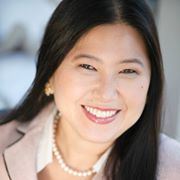Plastic Surgeon and Breast Reconstruction Specialist Dr. Constance Chen Weighs in on Tips about Breasts.
NEW YORK (PRWEB) October 21, 2020
More than any other organ in the human body, the breast occupies a place in our social and cultural landscape well beyond its physiological function to nourish our offspring. “The soft tissue that we think of as a breast is actually a mammary gland, a complex system of fat cells and ducts that produce milk and deliver it to a baby via the nipple,” says plastic surgeon and breast specialist Dr. Constance M. Chen. As much attention as we pay to the size, shape and appearance of a woman’s breasts, there are many fascinating facts – both important and trivial – that most people don’t know about breasts. Here are just a few of them.
- Breast size is hereditary. Genetics do play a role in determining breast size but not necessarily as you’d expect and they don’t tell the whole story. We inherit half our genes from each parent, so your breasts may not resemble your mother’s, her mother’s, or her sister’s. Your father’s genes have a say. “Environmental factors also play a role,” says Dr. Chen, “especially weight. Breasts are partly made up of fatty tissue so as you gain and lose weight, your breast size will change.”
2. Humans are the only primates with permanent breasts. All mammals have breasts and produce milk for their young but we are the only ones who develop breasts at puberty and keep them throughout our lives. Others are temporary, growing when needed to nurse then receding until needed again.
3. The ancient Egyptians knew about breast cancer as far back as 1600 B.C. Writings on papyrus describe tumors consistent with modern descriptions of the disease. Over the following centuries, many causes were suggested – from imbalances of bodily fluids to compression from tight clothing – and treatments ranged from cauterization to opium to arsenic.
4. You cannot exercise your way to bigger breasts. “Breasts are made of tissue, not muscle,” says Dr. Chen. “They may change in size with hormonal and weight changes. But even exercising the underlying chest muscles won’t increase the size of your breasts any more than creams or lotions will.”
5. Some animals get breast cancer. It is more common in dogs – and in some breeds – than in cats but tends to be more aggressive in cats. Spaying female dogs before their first heat dramatically reduces their risk of developing a malignant mammary tumor.
6. Breastfeeding won’t cause your breasts to sag. Droopy breasts are a natural consequence of aging as skin loses elasticity and as dense breast tissue is replaced by fat, which is more prone to sagging. Smoking and multiple pregnancies are contributing factors but breastfeeding has no effect on elasticity and will not cause breasts to sag. Only corrective surgery can lift sagging breasts.
7. The left breast is usually slightly larger than the right one. Very few women have perfectly symmetrical breasts. Differences in size up to 20% are normal. No one knows why the left breast is usually the larger one.
8. Larger breasts don’t produce more milk. Milk production does not depend on the size of the breasts. Large breasts are often large because they contain more fat cells, not more milk-producing cells.
9. Breasts are growing. The average bra size was 34B twenty years ago. Today, it is 34DD. Some of the change is due to companies inflating the sizes on their labels but increasing obesity, the number of women taking birth control pills, and exposure to environmental pollution are contributing factors.
10. Breast implants won’t last a lifetime. Breast augmentation is the most commonly performed cosmetic surgery in the U.S. But women who get implants in their 20s should not expect to still have them thirty years later. “Most implants have a ten-year warranty,” says Dr. Chen, “but many develop problems well before then and have to be removed or replaced.”
Constance M. Chen, MD, is a board-certified plastic surgeon with special expertise in the use of innovative natural techniques to optimize medical and cosmetic outcomes for women undergoing breast reconstruction. She is Clinical Assistant Professor of Surgery (Plastic Surgery) at Weill Cornell Medical College and Clinical Assistant Professor of Surgery (Plastic Surgery) at Tulane University School of Medicine. http://www.constancechenmd.com

